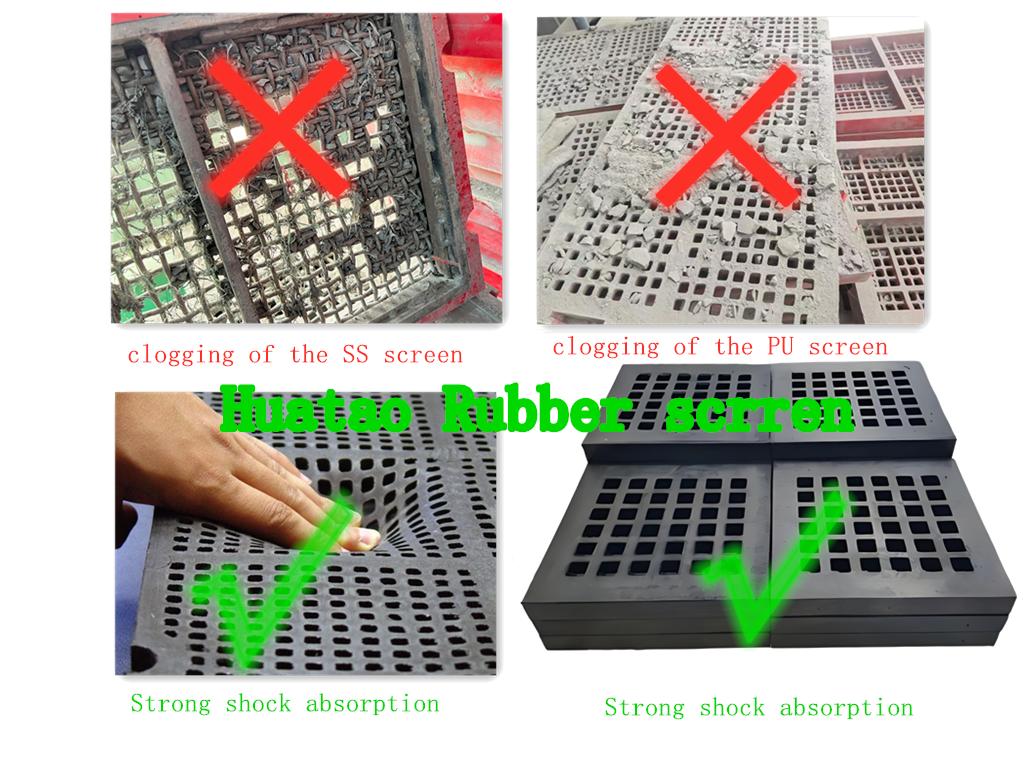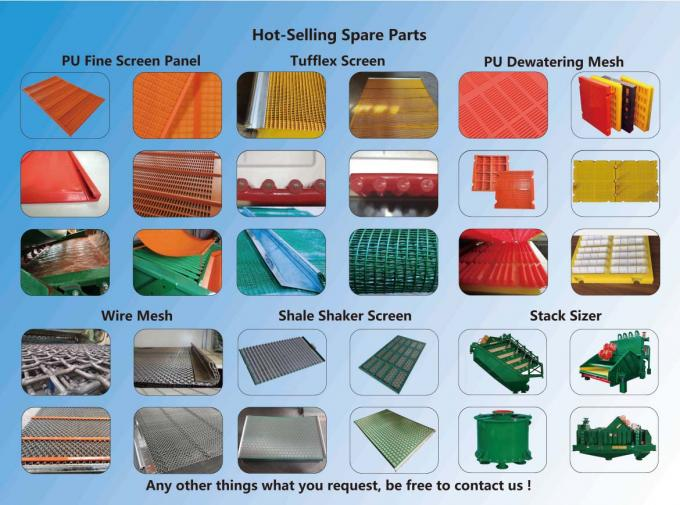Polyurethane screens are widely used in mining, metallurgy, and coal processing for their durability and efficiency. However, blinding—where screen apertures become blocked—can severely impact productivity. This article examines the primary causes of screen blinding and offers actionable solutions to restore and maintain optimal performance.

1. Material Characteristics
Near-Mesh Particles: Particles within ±10% of the screen aperture size tend to lodge in the openings.
High Mud Content: Fine mud (particles <0.074 mm) adheres to the screen surface, forming a clogging layer.
Excessive Moisture: Materials with moisture content exceeding 8% can agglomerate, blocking screen apertures.
2. Screen Design Flaws
Low Open Area: Screens with less than 40% open area restrict material flow, leading to accumulation.
Inappropriate Aperture Shape: Round holes may trap irregular particles, while elongated apertures (3:1 to 5:1 ratio) improve flow but are often underutilized.
Smooth Surface Texture: Lack of drainage grooves or protrusions allows fine particles to adhere easily.
3. Operational and Equipment Issues
Insufficient Vibration: Low frequency (<1200 r/min) or amplitude (<5 mm) fails to dislodge stuck particles.
Improper Screen Angle: Angles below 15° slow material flow, while angles above 25° reduce screening accuracy.
Lack of Cleaning Mechanisms: Absence of ultrasonic systems, sprayers, or rubber ball cleaners exacerbates blinding.
4. Maintenance Shortcomings
Overfeeding: Exceeding the screen’s capacity (typically >5 t/(m²·h)) causes material buildup.
Poor Installation: Uneven or loose screens hinder effective vibration.
Delayed Cleaning: Residual materials harden over time, worsening blockages.

1. Physical Cleaning Methods
Use high-pressure water (≥8 MPa) or compressed air (0.4–0.6 MPa) to clear apertures.
For hardened materials, soak screens in warm water (40–60°C) before rinsing.
2. Operational Adjustments
Temporarily increase vibration frequency or amplitude to dislodge particles.
Adjust the screen angle to optimize material flow.
Reduce feed rates by 30–50% to alleviate congestion.
3. Preventive Measures
Select screens with adequate open area and suitable aperture shapes.
Install auxiliary cleaning devices like spray systems or rubber ball trays.
Conduct regular inspections and clean screens promptly after shutdowns.
Addressing polyurethane screen blinding requires a systematic approach—from optimizing screen design to implementing proactive maintenance. By understanding the root causes and applying these solutions, operations can enhance efficiency, reduce downtime, and extend equipment lifespan.
For tailored screening solutions, consult HUATAO Group’s technical experts.
Contact Information:
Email: annie.lu@huataogroup.com
Website: www.tufflexscreen.com
WhatsApp: +86 18032422676
#PolyurethaneScreen #BlindingIssue #ScreeningEfficiency #ScreenMaintenance #MiningSolutions #HUATAOGroup #IndustrialScreening #PreventiveMaintenance #OperationalExcellence

can not be empty
can not be empty
